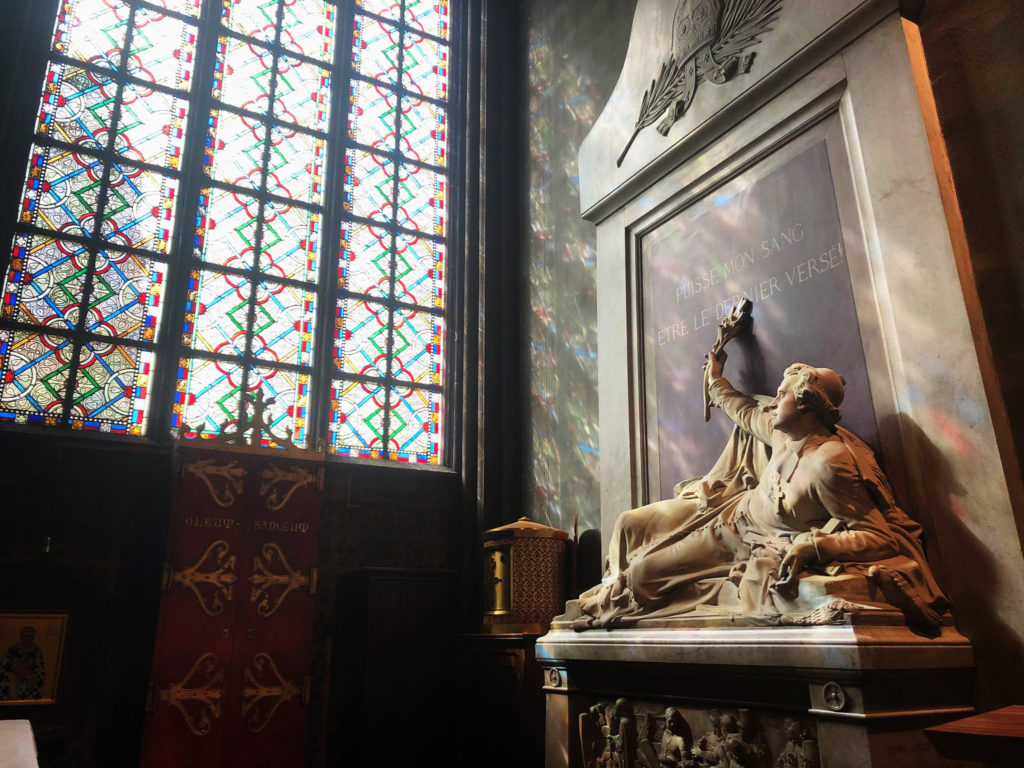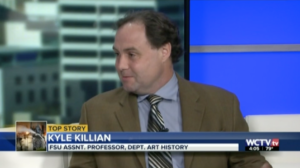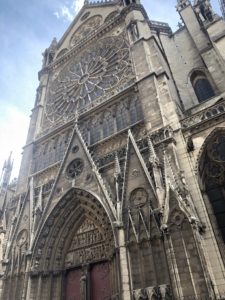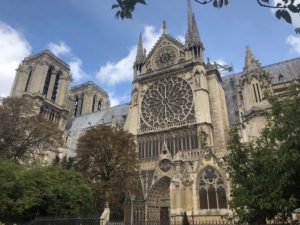Professor Kyle Killian Discusses Rebuilding of Notre Dame Cathedral

“Puisse mon sang être le dernier versé” (“May my blood be the last that is shed”), Monument of Archbishop Denis-Auguste Affre, Notre Dame. Photos courtesy of Martha Hadley.
 On the evening of April 15, 2019, the world watched in horror as Our Lady Of Paris, the twelfth-century Cathedral of Notre Dame, was engulfed in flames. After the tragic destruction of the roof and spire, Florida State University Art History Professor Kyle Killian lent his expertise to the public discussion. In an interview with WCTV, Dr. Killian provided insight into what will be necessary to repair the Cathedral in the coming years:
On the evening of April 15, 2019, the world watched in horror as Our Lady Of Paris, the twelfth-century Cathedral of Notre Dame, was engulfed in flames. After the tragic destruction of the roof and spire, Florida State University Art History Professor Kyle Killian lent his expertise to the public discussion. In an interview with WCTV, Dr. Killian provided insight into what will be necessary to repair the Cathedral in the coming years:
The first challenge, obviously, is they’ve got to get in and assess the level of damage and the structural integrity of the rest of the building. That’s a couple days off, I imagine. And then we’ll know a lot more about what needs to be done, once they know how stable the building is going to be. As you can imagine, that much heat in the building has destabilized a great deal of the structure.

But it’s important to recognize the success of past restoration projects of the kind. Fires of this kind are actually part of the history of cathedrals, and have been since the Middle Ages. In relatively recent history, York Minster in Northern England burned—the roof burned—in 1984, I believe, and it caused a great deal of damage there, in some ways even more because the whole roof was wooden. It didn’t have the stone vaults underneath to contain the fire, and so that damage took quite a bit of energy, time, and money to repair, but they managed it. It’s a beautiful building and the restoration there is wonderful. So, there’s hope in that.
As the reporter pointed out within hours of the fire, millions of dollars had already been raised or pledged for assistance in the reconstruction of the beloved cathedral. He asked what other efforts will be needed. Dr. Killian explained,
The big thing is going to be artisans and expertise, once they’ve decided what that’s going to look like. And that’s going to be the big question: what the rebuilding is actually going to look like. Do you make a replica of Notre Dame as it stood in 2019? Do you make a replica of it in 1300? In 1160? What’re they going to choose to do? Are they going to do something modern to encase what remains? Lots of difficult questions here from a heritage point of view and from a restoration point of view. So that’s the first step, and then finding the expertise to accomplish that. But, there are already a lot of accomplished masons and woodworkers in Europe working in various big churches like this in conservation, restoration, and just basic upkeep. The personnel will be there. Will there be enough of them? I don’t know that.

Commenting on the immediate and emotional reactions of people in all walks of life around the world, the reporter asked, “What’s the reaction like in the arts community when something like this happens to a landmark like that?”
Well, in some ways I think the immediate response is a kind of devastation as well, but maybe for slightly different reasons. A building like Notre Dame has occupied a central place in our sort of “canon” of what the past has looked like artistically, so when pieces of it are now lost forever—the roof was constructed of beams from the thirteenth century, right? And those are now gone completely, they can’t be replaced—and that is a painful loss. On the other hand, I think there is a fair amount of relief in that a lot of the building, the stained glass, a lot of the pieces of art inside the building weren’t damaged, or at least not very badly, as it looks. So you know, both those things. But how do you decenter this object from our history? I don’t know. That’s tough.
There is certainly enormous public, financial, and government support. Emmanuel Macron has said the French government hopes to have it all repaired in five years, and that is very hopeful. But again, these are the difficult decisions: what will that restoration look like? What do you want to do? So – a lot of unknowns, but a lot of hope.